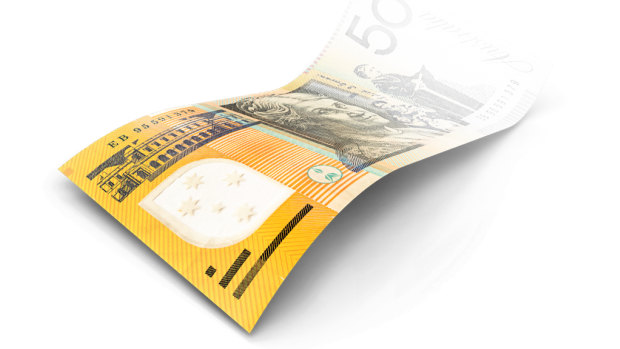By Shane Wright and David Crowe
Australians are being promised a national plan to ensure they can keep using cash despite the rapid shift to online payments, as the federal government brokers talks with banks, major retailers and regulators to prevent a massive disruption for shops and households.
Treasurer Jim Chalmers has revealed the demise of cash was a growing issue for the government, amid fears that older Australians and people living in rural and regional areas will not be able to easily access cash for day-to-day payments.

Treasurer Jim Chalmers has declared the government is committed to retaining cash across the country.Credit: Marija Ercegovac
The pledge came in an exclusive interview where the treasurer hit back at critics who claim the government has not achieved enough economic reform, pointing to 89 policy results to insist he was delivering on election promises and steadily fixing the economy.
Chalmers promised more reform in 2024 and said he wanted to see how existing help for households was flowing through the economy – such as cheaper childcare and energy bill relief – before making decisions on the cost of living in the May budget.
The shortage of cash is a growing concern for banks and regulators as they negotiate how to fund the growing cost of distributing notes. This week, Reserve Bank governor Michele Bullock said the share of payments made with cash had shrunk from 70 per cent in 2007 to 13 per cent last year.
Chalmers said that while people were obviously using far less cash, the government – which is winding up the cheque system by 2030 – said there continued to be a role for cash.
“If you want access to cash, you should be able to access cash that’s getting more difficult in a world where fewer people are using it,” he told this masthead.
“That’s why we have to think creatively about how we meet our obligations, particularly in regional communities.
“We’re committed to it. But it requires us to think differently about how we ensure people can have access if they want to.”
The 2022-23 financial year recorded the first drop in cash in circulation since the advent of decimal currency in 1966. In the 12 months to the end of November, the value of all notes in circulation fell by 1.7 per cent or $1.8 billion.

Treasurer Jim Chalmers says despite challenges in moving it around the country, cash was still highly valued.Credit: Alex Ellinghausen
While the number of the rarely used $100 note continues to grow, there was a 5 per cent drop in the much more common $50 notes in the 12 months to November, while the number of $20 notes fell by 3 per cent.
A growing problem for cash, apart from a sharp decline in the number of ATMs, is the movement of notes around the country.
The nation’s two largest cash transport companies, Linfox Armaguard and Prosegur, were given permissions to merge earlier this year. But Armaguard, which handles 90 per cent of movements, told the Australian Bankers’ Association and the Reserve Bank of Australia in mid-November its business is unsustainable due to the collapse in cash usage.
This week, the nation’s banks, the Reserve Bank and federal Treasury held talks about how to deal with Armaguard’s predicament. One option may be the creation of a cooperative, owned by the banking sector, that would be responsible for cash movements. Supermarkets and the Australia Post network could also be drawn into the operation.
Chalmers said there were a range of options to keep cash flowing across the country.
“We believe in an ongoing role for cash, but people are using it less and less, which means that the cost of getting it around the country goes up. So we have been one of a number of bodies trying to solve this,” he said.
While cash will continue, Chalmers said the government was also seeking to reduce the cost to consumers and merchants associated with new forms of payment.
One area of particular focus is the mobile wallet sector which is dominated by Apple and Google. Chalmers signalled more action to increase competition against the tech giants, who charge merchants for the use of their service.

The government is looking at ways of increasing competition and reducing costs in the mobile wallet sector.Credit: Tero Vesalainen
“We’re going to bring Google and Apple into the regulatory net. We’re going to treat them as they should be treated as part of the ecosystem,” he said.
This week, Chalmers and Finance Minister Katy Gallagher revealed in the mid-year budget update a $39.5 billion improvement in the nation’s finances over the next four years. The treasurer said a second successive budget surplus was “within striking distance”.
According to Chalmers, last year’s surplus and the improvement in this year’s budget were parts of a reform agenda that most Australians had not seen for decades.
He said from a 700,000 increase in total employment to reform of the Reserve Bank and planned changes to superannuation taxation, the government was modernising the economy.
“We have done more economic reform in the last year than we’ve seen in Australia in the last decade. And right across the board, we are making our economy more modern,” he said.
“We’re recognising that the economy that got us the last 30 years of prosperity isn’t going to deliver us the next 30 years of prosperity, the way that our economy is set up and our industrial base is set up.”
The treasurer signalled more reform was coming next year.
“I think inevitably in the life of any government, but perhaps particularly a first term government, the balance shifts over time from cleaning up after your predecessors and implementing your election commitments,” he said.
“The balance inevitably shifts towards new things. But those new things will be consistent with the direction that we have set.”
Cut through the noise of federal politics with news, views and expert analysis. Subscribers can sign up to our weekly Inside Politics newsletter.